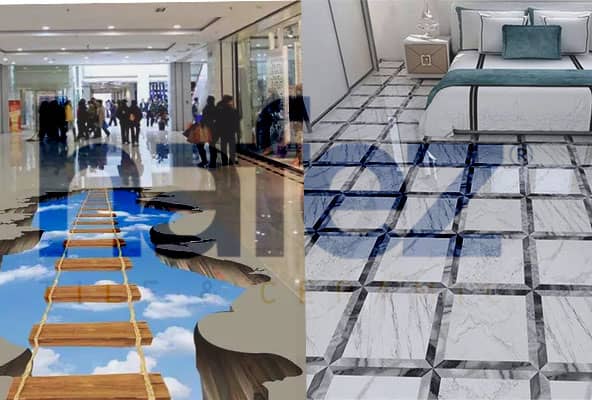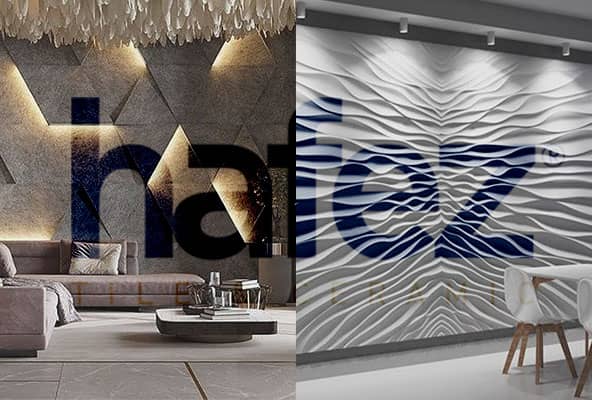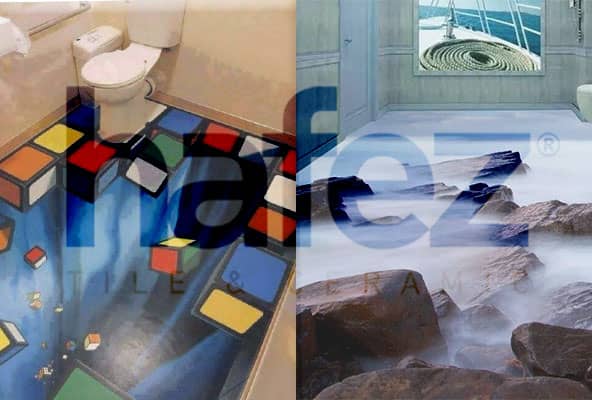Review of 3D ceramics
In this part of the series of Kashi Hafez educational articles, we will examine three-dimensional ceramics. Stay with us.
What is 3D ceramics?
Today, with the advancement of technology, we have always witnessed changes and transformations in various fields, especially the construction industry, and this is the reason why construction materials have been developed and improved a lot in the modern world.
In the modern era, a new type of ceramics has been introduced in the market, which is called 3D ceramics and they are somehow considered among the latest designs in the construction materials industry. In this type of ceramics, bulky and angular images are printed in such a way that the eyes of the audience see them in a multi-dimensional way, and these images can be of nature, cities, historical places, tourist attractions, etc., which have different dimensions in The market is available or can be ordered.
The first 3D ceramic produced belonged to a company in Dubai where digital printing technology was used. After the production of the first example of this type of ceramic, today this type of tile is also seen in the market of different countries of the world such as Iran.
If we want to know where this type of tile is used, it should be said that they are usually used in bathrooms, kitchen cabinets, houses, walls, etc.
Maybe you have a question, how many types of 3D ceramics are there and what is the difference between each of them? To answer these two questions, stay with us until the end of the article.
Classification of three-dimensional ceramics:
3D tiles consist of four types a, b, and d, c, each of which is different in terms of construction and quality. In the following, we introduce and examine the advantages and disadvantages of these four tile models.
Ceramic type A:
This type of ceramic is the same as simple ceramics, with the difference that 3D color images are printed on it with a special device, and the quality of the image depends on the quality of the ceramic.
Ceramic type B:
Ceramics of the second type are actually ordinary ceramics on which a three-dimensional ceramic label is attached, and it can be said that these labels have a higher clarity quality than the first type and are more natural.
Ceramic type C:
In the third type of this type of tile, a glass is placed on the ceramic, which causes more visual effect and error, and this type of handle is stronger than the previous two models.
Type D ceramic:
This category of tiles is usually used for wall facades and plastering art is used to give multi-dimensional and prominent effects. In other words, in this type of ceramics, by using plastering, multifaceted patterns and reliefs are formed, which creates a three-dimensional effect in the eyes of the audience by changing the light and angle.
Advantages and disadvantages of 3D tiles:
Advantages :
1- They are one of the most up-to-date and luxurious types of tiles, which are created using advanced and modern devices.
2- It is possible to print any desired design on ceramic.
3- They have high effect, clarity and attractiveness.
4- Antifreeze, antiacid, high durability and high quality colors are other features of this type of ceramics.
Disadvantages:
1- Compared to other categories of tiles, they have a higher price.
2- If it is used in an inappropriate place or excessively, it disturbs the visual peace and causes boredom.
3- There are few sellers and producers of this type of tile in Iran, and this causes a decrease in the variety of three-dimensional tiles in Iran.






There are no comments